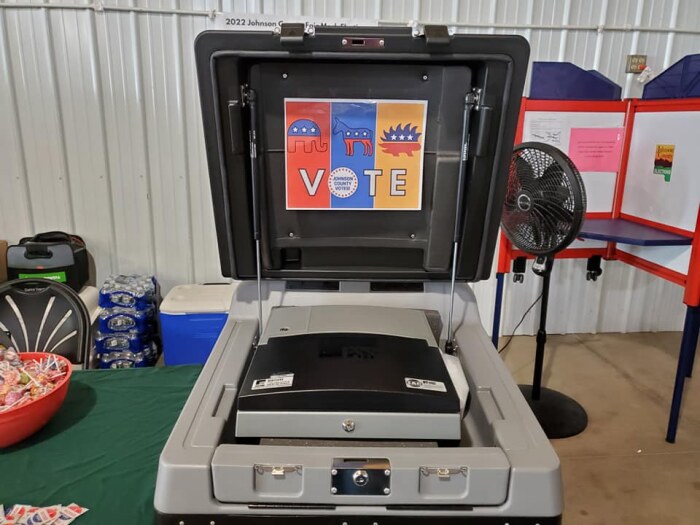Matt Hardin is an attorney who lives in Des Moines. He has volunteered for, worked on, and donated to Democratic campaigns since 2004, and also worked in the Iowa legislature. He is interested in reforming political institutions so that voting is easy, convenient, and protected.
Maybe you’re on the couch with the TV on, checking Twitter on your phone and refreshing a county auditor page on your laptop. It’s getting late. You think, “why don’t they call these races?”
On Wednesday morning, you may ask yourself, “Dear God, why did I stay up so late?” The next day comes and goes, and some elections still haven’t been called. You think to yourself again, “Why? Why is this taking so long?” For the impatient among us (like myself), here are the big reasons why.
We vote until Tuesday evening. Tuesday is a workday and a school day. Most people have just a few hours when they can vote—before work (and child activities) or after. That means there’s a crush of people in the evening, in the last hours before polls close. (State laws vary, but in most places, voting continues until 7:00 pm or 8:00 pm.)
In big cities, this leads to long lines, further delaying the counting and reporting process. This country also spans many time zones, so west coast results don’t start rolling in until late in the central and eastern regions. All this adds up to a very late night to count the election day votes.
More counting could be done the same day if polls closed at 5:00—but that means lots of people couldn’t vote. So, the value judgment weighs in favor of more time to vote rather than ensuring a more humane bedtime for people who read political news obsessively. Good trade. We could solve this by making election day a holiday or scheduling elections on Saturday and/or Sunday—that’s what most countries do. That way, the voting would be spread out over an entire day, rather than packed into the morning and evening times.
We have *a lot* of things to vote for. We vote for many offices in the United States. This year most voters see spots on their ballot for U.S. senator, U.S. representative, state governor, other statewide offices, county offices, state senator, state representative, judges, and referendums. Those have overlapping district lines, and some of the districts span multiple counties (or portions of counties).
All this adds layers of complexity for the count, and complexity means time and effort. It also makes voting itself take longer, so voters stand in line longer. Still, most states have the results basically finished by the morning after the election, which is pretty impressive. Other countries often have just one, maybe two, offices to vote for. We could solve the complexity issue by reducing the number of offices on the ballot.
We (in some places) don’t pre-process absentee ballots. Some states don’t allow county election workers to open envelopes for absentee ballots, sort ballots by district, verify signatures, scan ballots, or tally results before polls close. This is called “pre-processing,” and all that takes time.
If you don’t do that until after polls close, the count is going to be slower—kind of like pulling your mower out and realizing it needs gas or a battery charge. Some states don’t allow any of that to happen before polls close, usually thanks to laws passed by Republicans who spread conspiracy theories when the results don’t come in immediately. When a lot of people vote absentee, the chances of a long delay to get results and race calls are high. But, this is a solvable problem: allow pre-processing.
We (in some places) accept ballots up to a week later. It’s called “snail mail” for a reason. Each state decides when absentee ballots must be postmarked and how late it will accept them. Some states accept ballots up to a week later, as long as they are postmarked on Election Day. If lots of people vote absentee (and some states vote almost entirely by mail now), that means in close races we won’t know the winners for several days.
Some states accept ballots for a few days after election day, if postmarked before the election, while others—now including Iowa, under a law Republicans enacted in 2021—require all ballots to arrive by the time polls close.
Under such laws, we’ll know the winners sooner, but at the cost of missing votes from people who didn’t decide to vote until it was too late for absentee (and then couldn’t get to the polls on November 8). In addition, some ballots that were mailed before the election won’t be counted, because the U.S. Postal Service didn’t deliver the envelope quickly enough. The solution here is more early voting days, convenient election day voting (see #1), and for people to relax and be patient.
My advice for the average person is to take it easy after the polls close. You needn’t be a sleep-deprived zombie on Wednesday. The counts will be fine—even if the results aren’t ones you like, and even if it’s annoying not to know the results sooner.
When the news shows a race as “96 percent reporting” for hours or even days, do not assume a bunch of ballots are getting torn up, or new ones are getting flown in from Italy or China or Timbuktu. Most of the delays happen because of allowances we make to let more people to vote by election day. That’s good—and used to be uncontroversial.
A bit of Occam’s razor helps here. The results are delayed because the under the rules, counting votes takes time.
Top image of vote tabulator first posted on the Johnson County auditor’s Facebook page in July.

